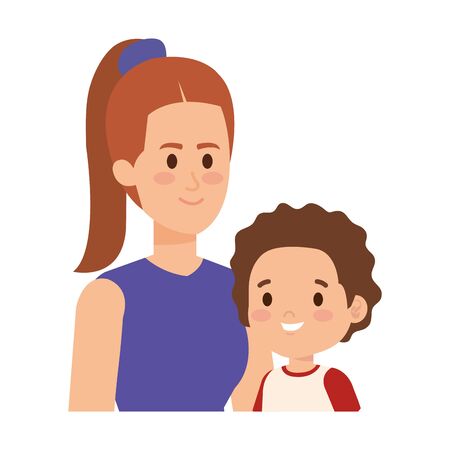1. Introduction to Baby Sign Language
As a new parent, understanding your baby’s needs and wants can sometimes feel like a guessing game. This is where baby sign language comes in! Baby sign language is a way for infants to communicate using simple hand gestures before they develop verbal speech. By teaching your little one basic signs, you can reduce frustration, strengthen your bond, and encourage early language development.
What Is Baby Sign Language?
Baby sign language is a modified form of American Sign Language (ASL) or other standardized sign languages, adapted for babies to use easily. It typically consists of simple gestures that represent common words like “milk,” “more,” “all done,” and “mommy.” These signs help babies express their needs without crying or fussing.
Benefits of Baby Sign Language
Introducing baby sign language has numerous advantages for both parents and babies. Here are some key benefits:
| Benefit | Description |
|---|---|
| Reduces Frustration | Helps babies communicate their needs before they can speak, reducing tantrums. |
| Strengthens Bond | Encourages interaction and deeper connection between parent and child. |
| Boosts Early Communication | Provides babies with a way to express themselves earlier than spoken language allows. |
| Supports Language Development | Studies suggest that signing may enhance verbal language skills over time. |
| Increases Confidence | Gives babies a sense of control over their environment by making their needs known. |
When to Start Teaching Baby Sign Language
You can start introducing baby sign language as early as 6 months old, though some parents begin even earlier. Babies typically begin signing back around 8 to 12 months when their motor skills develop enough to imitate gestures. The key is consistency—using the same signs regularly while speaking the corresponding words helps reinforce learning.
How Baby Sign Language Works
The process of teaching baby sign language involves repetition, patience, and positive reinforcement. Here’s how to get started:
1. Choose Common Signs
Select a few essential signs like “milk,” “eat,” “more,” and “all done” that relate to daily routines.
2. Use Signs Consistently
Every time you say the word, use the corresponding sign so your baby associates the gesture with the meaning.
3. Encourage Imitation
Gently guide your baby’s hands if needed and celebrate when they attempt to sign back.
4. Be Patient and Keep Practicing
Babies learn at their own pace—keep signing consistently and praise their efforts!
By incorporating baby sign language into your daily interactions, you’ll create a smoother communication experience with your little one while fostering their cognitive and emotional development.
2. When and How to Start Teaching Signs
Introducing baby sign language at the right time can make communication easier and more enjoyable for both you and your little one. But when should you start, and how can you incorporate signs into your daily routine? Lets explore!
When to Start Teaching Baby Sign Language
Babies are ready to begin learning signs earlier than most parents expect! While every child develops at their own pace, here’s a general guideline:
| Age Range | What to Expect |
|---|---|
| 4-6 months | Your baby begins observing hand movements but may not respond yet. |
| 6-9 months | Your baby may start imitating simple signs like “milk” or “more.” |
| 9-12 months | Your baby is likely to use signs consistently alongside vocalizations. |
| 12+ months | Your child may combine signs with words for clearer communication. |
If your baby is older than 12 months and youre just starting, don’t worry! Its never too late to introduce signing. Many toddlers quickly pick up signs when they see them used regularly.
How to Introduce Baby Signs in Daily Life
Start with Simple and Useful Signs
The best way to begin is by choosing a few essential words that are meaningful in your babys daily routine. Common first signs include:
- “Milk”: Open and close your fist like youre squeezing a bottle.
- “More”: Touch fingertips together on both hands.
- “All done”: Rotate both hands outward, palms facing away.
- “Eat”: Tap fingertips to lips as if bringing food to your mouth.
- “Mom” & “Dad”: Tap thumb to chin (mom) or forehead (dad).
Say the Word While Signing
Always say the word out loud while demonstrating the sign. This helps reinforce the connection between spoken language and gestures.
Be Consistent and Repetitive
The more frequently you use signs in natural situations, the faster your baby will learn them. For example, always sign “milk” before feeding time so they associate it with getting milk.
Praise Any Attempts to Sign
If your baby tries to imitate a sign, even imperfectly, praise them warmly! Encouragement helps build confidence and motivates them to keep learning.
Add More Signs Gradually
Once your baby masters a few basic signs, slowly introduce new ones related to their interests, such as “dog,” “book,” or “play.”
Mistakes Are Part of Learning!
Your baby might not get every sign perfect at first—thats okay! The goal is communication, not perfection. Celebrate their progress and keep practicing together.
The key to success with baby sign language is patience, repetition, and making it a fun part of daily life. Soon enough, youll notice your little one using signs to express their thoughts and needs!

3. Essential Signs to Begin With
When starting with baby sign language, it’s best to begin with a few simple and practical signs that your baby can easily recognize and use in daily interactions. These foundational signs help reduce frustration and improve communication between you and your little one.
Basic Signs to Get Started
Here are some of the most useful baby signs that are both easy to learn and commonly used:
| Word | Sign Description | Why Its Useful |
|---|---|---|
| Milk | Open and close your hand as if you’re milking a cow. | This helps babies express when they want to nurse or have a bottle. |
| More | Touch your fingertips together repeatedly. | A great way for babies to ask for more food, playtime, or attention. |
| All Done | Turn both hands outward, palms facing away from you. | An easy way for babies to indicate when they’ve finished eating or an activity. |
| Eat | Tap your fingers to your lips as if bringing food to your mouth. | This allows babies to tell you when they are hungry. |
| Water | Tap your index finger to your chin in a “W” shape. | A helpful sign for when your baby is thirsty. |
| Mama / Dada | Tap your thumb to your chin (Mama) or forehead (Dada). | A wonderful way for babies to call for parents specifically. |
| Please | Rub your open palm in a circular motion on your chest. | This helps teach basic manners and polite requests early on. |
| Thank You | Touch your fingers to your chin and move them outward. | A simple way for babies to express gratitude. |
Tips for Teaching These Signs
- Be Consistent: Use the same sign every time you say the word aloud so your baby can make the connection.
- Add Signs Gradually: Start with just a few essential words, then introduce new ones as your baby gets comfortable with signing.
- Simplify Gestures if Needed: Some babies may develop their own slight variations of signs—encourage their efforts!
- Praise and Reinforce: Celebrate whenever your baby successfully uses a sign by responding positively and repeating the word aloud.
- Create a Routine: Incorporate signs into everyday activities like mealtime, playtime, and bedtime for better learning.
The Power of Early Communication
Babies are naturally eager to communicate long before they can speak. By introducing these essential signs early on, youre giving them a valuable tool to express their needs and emotions, making daily interactions smoother and more enjoyable for both of you. Start small, be patient, and enjoy this special bonding experience with your little one!
4. Tips for Consistency and Engagement
Consistency is key when introducing baby sign language. The more frequently you use signs, the faster your baby will recognize and start using them. Here are some best practices to help reinforce signs effectively.
Use Repetition Daily
Babies learn through repetition, so incorporating signs into your daily routine is essential. Try using the same signs during meals, playtime, and bedtime to create strong associations.
Encourage with Positive Reinforcement
Praise and encouragement can motivate your baby to continue signing. Whenever they attempt or successfully use a sign, respond with enthusiasm, smiles, and verbal affirmations like “Great job!” or “Yes, thats milk!” This reinforcement helps them feel confident in their communication skills.
Involve Family Members
Getting family members and caregivers involved in signing ensures consistency across different environments. When everyone uses the same signs, your baby will have more opportunities to learn and practice.
Ways to Involve Family:
| Family Member | How They Can Help |
|---|---|
| Parents | Use signs consistently during daily activities. |
| Siblings | Make signing fun by incorporating it into games. |
| Grandparents | Learn basic signs and use them during visits. |
| Caregivers | Reinforce signs while feeding or playing with the baby. |
Be Patient and Have Fun
Every baby learns at their own pace, so patience is crucial. Keep the experience lighthearted by singing songs, reading books, and playing interactive games that incorporate signs. Making learning enjoyable encourages consistent engagement.
Watch for Your Baby’s Cues
Your baby might develop their own variations of certain signs before mastering them correctly. Pay attention to these attempts and respond positively to encourage further learning.
Practice Makes Perfect!
The more you integrate baby sign language into everyday moments, the more natural it will feel for both you and your little one. Keep practicing, stay engaged, and enjoy watching your baby communicate in new ways!
5. Overcoming Common Challenges
As you and your baby embark on the journey of learning baby sign language, you may encounter some common challenges. Its completely normal to experience moments of frustration, slow progress, or even confusion when mixing signs with spoken words. The key is to stay patient and consistent. Here’s how you can navigate these obstacles smoothly.
Managing Frustration
Both parents and babies can feel frustrated when communication doesn’t happen as quickly as expected. Your baby might not immediately respond to signs, or they may seem uninterested at times. To ease frustration:
- Keep signing fun and engaging—use songs, games, and facial expressions to make it more interactive.
- Avoid pressuring your baby; let them learn at their own pace.
- Celebrate small wins! Even partial attempts at signing are steps in the right direction.
Dealing with Slow Progress
Every baby develops at their own pace, so its important to set realistic expectations. Some babies pick up signs quickly, while others take a bit longer. Consider these tips if progress seems slow:
| Challenge | Solution |
|---|---|
| Your baby isn’t responding to signs | Be patient and keep repeating the signs consistently during daily routines. |
| You’re unsure if your baby understands | Watch for small reactions like eye contact or excitement when you use a sign. |
| Your baby only signs occasionally | This is normal! Encourage them by responding positively when they do sign. |
Avoiding Confusion Between Signs and Spoken Words
A common concern among parents is whether signing will delay speech development. In reality, research shows that baby sign language can enhance verbal skills by reinforcing word meanings. To prevent confusion:
- Always say the word aloud while signing to connect the visual cue with the spoken language.
- If your baby mixes signs and spoken words, don’t worry—this is part of the learning process!
- Encourage verbal responses by repeating the word after they sign it.
Staying Consistent
The most important factor in overcoming challenges is consistency. Babies thrive on repetition and routine. Try incorporating signs into everyday activities like mealtime, playtime, and bedtime. Over time, your baby will begin recognizing and using the signs more naturally.


